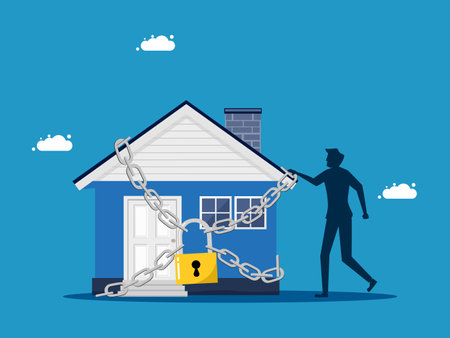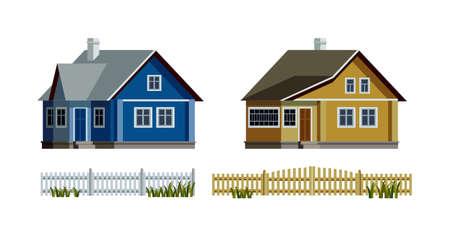Understanding Listed Homes in the UK
In the United Kingdom, a “listed home” is a property officially recognised for its special architectural or historic interest. Under the Planning (Listed Buildings and Conservation Areas) Act 1990, these buildings are recorded on statutory lists maintained by Historic England, Historic Environment Scotland, Cadw in Wales, or the Northern Ireland Department for Communities. There are three primary grades of listed status: Grade I covers buildings of exceptional interest; Grade II* denotes particularly important buildings of more than special interest; and Grade II includes buildings of special interest, warranting every effort to preserve them. Owning a listed home comes with unique legal responsibilities. Owners are custodians of the nation’s heritage and must ensure any changes—be it repairs, renovations, or even seemingly minor alterations—comply with strict conservation rules. This means securing listed building consent before making alterations that might affect the home’s character. The intent is to protect the heritage value for future generations while allowing homeowners to enjoy modern living standards. Understanding these obligations is crucial for blending contemporary comforts with respectful stewardship of historical assets.
Challenges of Modern Living in Listed Properties
Updating listed homes to accommodate contemporary lifestyles presents a unique set of challenges, balancing modern comfort with stringent heritage protection requirements. Many owners of listed properties in the UK encounter practical limitations and cultural sensitivities when attempting to improve energy efficiency, accessibility, or technological integration within their historic homes.
Legal and Planning Hurdles
Listed buildings are protected under the Planning (Listed Buildings and Conservation Areas) Act 1990, which places significant restrictions on alterations. Any proposed changes—whether internal or external—require Listed Building Consent (LBC) from the local planning authority. Failure to obtain proper consent can lead to criminal prosecution, making compliance a legal imperative for homeowners. The process is often lengthy, involving consultations with conservation officers and sometimes national heritage bodies, such as Historic England.
Common Challenges Faced by Owners
| Area of Modernisation | Typical Limitation | Cultural Sensitivity |
|---|---|---|
| Insulation & Energy Efficiency | Restrictions on window replacements, wall insulation may be prohibited | Preservation of original features valued by local communities |
| Smart Technology Integration | Visible wiring or equipment may not be permitted in protected areas | Avoiding visual impact on historic interiors and facades |
| Accessibility Improvements | Structural changes require extensive justification and consent | Sensitivity towards maintaining architectural integrity for future generations |
| Kitchen & Bathroom Upgrades | Limitations on relocating plumbing or removing period fixtures | Respect for historical authenticity in room layouts and materials |
The Balance Between Progress and Preservation
This delicate balancing act means that even well-intentioned upgrades can become contentious. Local authorities and heritage groups often weigh proposals against the risk of diminishing a building’s character or historic significance. The result is a process that demands careful planning, specialist advice, and often compromises between modern convenience and preservation imperatives.

3. Regulatory Framework for Heritage Protection
When considering modern upgrades—such as smart home solutions—for listed properties, it is crucial to understand the robust regulatory framework designed to protect heritage assets across the UK. The cornerstone of this framework is the requirement for Listed Building Consent. Any alteration, extension, or demolition that affects the character or historic fabric of a listed building must secure this consent from the local planning authority before any works commence. Failure to obtain such approval can result in legal consequences and even criminal prosecution.
Key Legislative Requirements
The primary legislation governing heritage protection is the Planning (Listed Buildings and Conservation Areas) Act 1990. Under this Act, all works that may impact the special architectural or historical interest of a listed building are subject to strict scrutiny. This includes internal modifications, installation of new technologies, and changes to external features. It is essential for homeowners to engage with conservation officers early in the planning process to ensure proposals are sympathetic and compliant.
Role of Local Authorities
Local authorities act as gatekeepers for listed buildings within their jurisdiction. They assess applications for Listed Building Consent, balancing the need for modern living—such as improved energy efficiency or enhanced security—with the imperative to preserve original features and historical context. Many councils have dedicated conservation teams who provide guidance on acceptable interventions and facilitate dialogue between homeowners and statutory consultees.
Historic England’s Involvement
Historic England, as the government’s adviser on heritage matters, plays an influential role in safeguarding nationally significant assets. For Grade I and Grade II* listed properties, Historic England is often consulted by local authorities on proposed changes. Their input ensures that adaptations—whether installing smart heating controls or discreet security systems—do not compromise a property’s unique value. Homeowners are encouraged to consult Historic England’s technical advice documents, which outline best practices for integrating modern amenities without undermining heritage significance.
This layered regulatory environment ensures that while listed homes can benefit from technological advancements, these improvements are carefully managed to respect and conserve Britain’s rich architectural legacy.
4. Smart Home Integration Within Heritage Constraints
Listed homes in the UK present unique challenges for homeowners wishing to adopt modern smart home technologies. While the desire for comfort, energy efficiency, and security is strong, any upgrades must be carried out in a manner that respects both legal requirements and the architectural integrity of heritage properties.
Understanding Legal Boundaries
Before integrating smart systems, it is crucial to consider the relevant planning permissions and listed building consents. The law distinguishes between “reversible” changes—those that can be undone without harm—and “irreversible” alterations that could affect protected features such as historic mouldings, sash windows, or original stonework. Failure to comply may result in enforcement action or prosecution.
Smart Technology Options for Listed Properties
| Technology Type | Permitted Approaches | Preservation-Friendly Features |
|---|---|---|
| Lighting Control | Wireless switches and bulbs; no wall chasing required | No damage to plaster or woodwork; easily removed |
| Heating Systems | Smart thermostats with existing radiators; non-invasive sensors | No modification of period fixtures; portable devices preferred |
| Security Solutions | Bespoke wireless alarms; discreet camera placement | No drilling into fabric; external units subject to approval |
| Energy Monitoring | Plug-in smart meters; clamp-on devices for mains cables | No rewiring or permanent installation needed |
Collaboration with Conservation Officers
Liaising early with local conservation officers ensures proposals are sympathetic and compliant. Detailed plans showing how devices avoid damaging original features will facilitate approvals. In some cases, written guidance from Historic England or local authorities can clarify acceptable practices.
Best Practice: Discreet Implementation Strategies
The key principle is minimal intervention. Opt for solutions that blend seamlessly with the property’s character—such as retrofitting behind existing panelling or using adhesive mounts rather than screws. Many manufacturers now offer smart devices styled to complement period interiors, further reducing visual impact.
Summary Table: Compliance Checklist for Smart Upgrades in Listed Homes
| Step | Action Required |
|---|---|
| 1. Research Regulations | Review national and local listing criteria before work begins. |
| 2. Consult Experts | Engage conservation officers and certified installers. |
| 3. Choose Reversible Tech | Select non-invasive systems designed for heritage settings. |
| 4. Document Changes | Create a record of all installations for future reference. |
| 5. Maintain Aesthetics | Pursue discreet, complementary designs wherever possible. |
This careful approach allows homeowners to enjoy the benefits of modern living while upholding their responsibility as custodians of Britain’s historic built environment.
5. Tailored Insurance Solutions for Listed Homes
Insuring a listed home in the UK is not as straightforward as arranging cover for a modern property. The unique character, historical value, and specific building materials of listed homes introduce specialised risks that require bespoke insurance solutions. Standard home insurance policies often fall short when it comes to covering the full scope of potential losses or damage associated with heritage properties.
Understanding the Distinct Risks
Listed homes face distinct risks such as increased exposure to weathering, challenges in sourcing traditional building materials, and stringent regulatory requirements for repair and restoration. Owners must consider the potential impact of fire, flood, theft, and accidental damage, all within the context of mandatory conservation standards imposed by local authorities. These factors can significantly increase both the complexity and cost of repairs.
Specialist Cover Options
Tailored insurance products for listed homes offer enhanced features compared to standard policies. These may include guaranteed rebuilding costs using authentic materials and methods, cover for architect and specialist surveyor fees, protection against accidental damage during restoration works, and legal expenses related to planning disputes. Some policies also provide alternative accommodation if extensive repairs render the property uninhabitable—a crucial consideration given the longer restoration times typically required for listed buildings.
The Value of Expert Advice
Navigating the nuances of insuring a listed home demands guidance from brokers or insurers with proven expertise in heritage properties. UK-based specialists understand both the legal frameworks governing listed buildings and the practicalities of their upkeep. They can offer tailored risk assessments, recommend suitable levels of cover, and ensure compliance with Historic England or local council requirements. Engaging an expert not only safeguards your investment but also upholds your obligations as a custodian of British heritage.
6. Case Studies: Success Stories from Across the UK
Across the United Kingdom, numerous listed properties stand as testament to the possibility of blending modern living with heritage protection. These success stories showcase how thoughtful planning, adherence to regulations, and innovative solutions can deliver comfortable, contemporary homes without compromising historic value.
Revitalising a Georgian Townhouse in Bath
One notable example is a Grade II listed Georgian townhouse in Bath. The owners worked closely with conservation officers and specialist architects to introduce underfloor heating, discreet double glazing, and smart lighting systems. All interventions were reversible and respected the original structure, ensuring that period features such as decorative cornicing and sash windows remained intact. This careful approach allowed for enhanced energy efficiency and day-to-day comfort while preserving the property’s architectural significance.
Modern Comforts in a Tudor Cottage, Suffolk
In Suffolk, a 16th-century timber-framed cottage illustrates another successful integration of modern amenities. Here, sensitive installation of Wi-Fi-enabled security systems and climate control was achieved by routing cabling through existing voids and using wireless technology where possible. The project demonstrates that it is feasible to enjoy modern security and convenience in even the oldest buildings—provided that all upgrades are reversible and use non-invasive methods.
Smart Technology in a Victorian Terrace, Manchester
A Victorian terrace house in Manchester underwent an extensive retrofit to incorporate smart home automation. By concealing hardware within bespoke cabinetry and original fireplaces, the integrity of historic interiors was maintained. The system enables remote management of heating, lighting, and blinds—delivering both sustainability benefits and improved quality of life for occupants, without altering protected features.
Lessons Learned from Successful Projects
These case studies underscore several key principles: early engagement with local planning authorities, a commitment to reversibility and minimal intervention, and collaboration with heritage specialists. By prioritising these elements, homeowners across the UK have demonstrated that listed status need not preclude comfortable, future-ready living environments.
The Path Forward for Listed Homeowners
The growing number of successful projects provides inspiration and practical blueprints for others seeking to balance modernity with preservation. As technology continues to evolve and regulations adapt, more listed homeowners will be able to enjoy the best of both worlds—living comfortably today while protecting Britain’s architectural heritage for generations to come.


